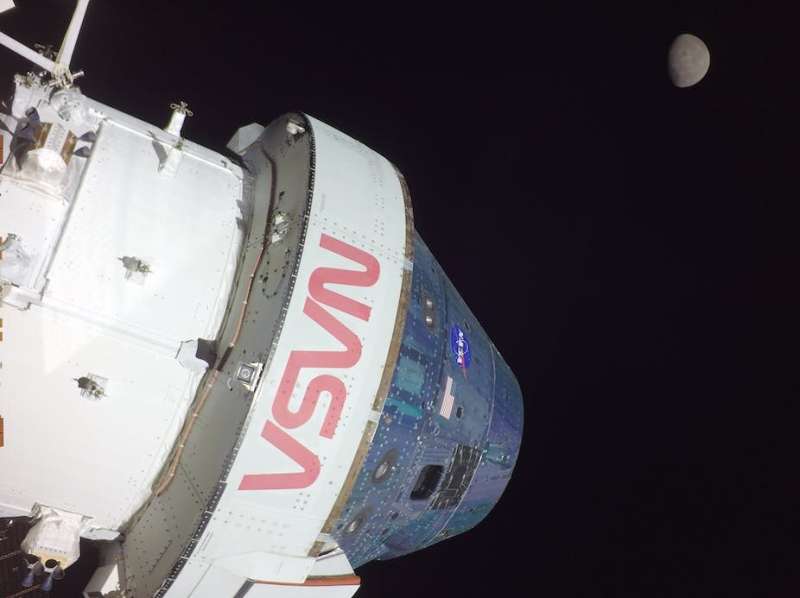
Copernical Team
Sidus Space signs MOU with Capital C for maritime satellite development
 Sidus Space, Inc. (NASDAQ:SIDU), a Space-as-a-Service company focused on mission critical hardware manufacturing combined with commercial satellite design, manufacture, launch, and data collection, has signed a Memorandum of Understanding ("MOU") with Capital C.
As part of the agreement, Sidus will assist in developing, delivering, and maintaining surveillance and tracking systems with sof
Sidus Space, Inc. (NASDAQ:SIDU), a Space-as-a-Service company focused on mission critical hardware manufacturing combined with commercial satellite design, manufacture, launch, and data collection, has signed a Memorandum of Understanding ("MOU") with Capital C.
As part of the agreement, Sidus will assist in developing, delivering, and maintaining surveillance and tracking systems with sof Chen Dong sets national record for longest time in space
 Chen Dong has set a new record for the most cumulative days living and working in space by a Chinese astronaut.
The China Manned Space Agency said on Tuesday that the two-time space traveler, who is onboard China's orbiting Tiangong space station, has become the first Chinese to stay in orbit for more than 200 days.
Together with two other astronauts, Liu Yang and Cai Xuzhe, Chen was
Chen Dong has set a new record for the most cumulative days living and working in space by a Chinese astronaut.
The China Manned Space Agency said on Tuesday that the two-time space traveler, who is onboard China's orbiting Tiangong space station, has become the first Chinese to stay in orbit for more than 200 days.
Together with two other astronauts, Liu Yang and Cai Xuzhe, Chen was China aims to establish new global partnership in space exploration, innovation: CNSA
 China is aiming to establish a new global partnership in space exploration and innovation, in an effort to build a community with shared future for humanity in outer space, according to a statement issued by the China National Space Administration on Monday.
The statement was issued during the United Nations/China Global Partnership Workshop on Space Exploration and Innovation, which opene
China is aiming to establish a new global partnership in space exploration and innovation, in an effort to build a community with shared future for humanity in outer space, according to a statement issued by the China National Space Administration on Monday.
The statement was issued during the United Nations/China Global Partnership Workshop on Space Exploration and Innovation, which opene Shenzhou XV to begin mission to space soon
 China will conduct its Shenzhou XV manned spaceflight in coming weeks, sending three astronauts into orbit for a six-month stay inside the country's Tiangong space station.
The Long March 2F carrier rocket, which will haul the Shenzhou XV into space, was moved to a service tower at the Jiuquan Satellite Launch Center in northwestern China's Gobi Desert on Monday. It will undergo final chec
China will conduct its Shenzhou XV manned spaceflight in coming weeks, sending three astronauts into orbit for a six-month stay inside the country's Tiangong space station.
The Long March 2F carrier rocket, which will haul the Shenzhou XV into space, was moved to a service tower at the Jiuquan Satellite Launch Center in northwestern China's Gobi Desert on Monday. It will undergo final chec Tianzhou 4 deploys minisatellite
 China has recently conducted an in-orbit test of a robotic cargo spacecraft to deploy miniature satellites, according to a project insider.
In the test that took place on Nov 14, the Tianzhou 4 cargo ship, which was on its journey back to Earth, deployed a CubeSat named SmartSat 3A into a low-Earth orbit about 380 kilometers above the ground, said Liu Likun, founder and CEO of Smart Satell
China has recently conducted an in-orbit test of a robotic cargo spacecraft to deploy miniature satellites, according to a project insider.
In the test that took place on Nov 14, the Tianzhou 4 cargo ship, which was on its journey back to Earth, deployed a CubeSat named SmartSat 3A into a low-Earth orbit about 380 kilometers above the ground, said Liu Likun, founder and CEO of Smart Satell Milestone for JWST exoplanet observations: atmosphere properties in more detail than ever before
 Observations of the exoplanet WASP-39b with the James Webb Space Telescope (JWST) have yielded a wealth of information about the planet's atmosphere - a whole new level of observational data, and a harbinger of how JWST will shape the study of exoplanet atmospheres in the future. The detailed infrared spectra taken with three of JWST's four instruments contain information about atmospheric chemi
Observations of the exoplanet WASP-39b with the James Webb Space Telescope (JWST) have yielded a wealth of information about the planet's atmosphere - a whole new level of observational data, and a harbinger of how JWST will shape the study of exoplanet atmospheres in the future. The detailed infrared spectra taken with three of JWST's four instruments contain information about atmospheric chemi Artemis: why it may be the last mission for NASA astronauts

Neil Armstrong took his historic "one small step" on the moon in 1969. And just three years later, the last Apollo astronauts left our celestial neighbour. Since then, hundreds of astronauts have been launched into space but mainly to the Earth-orbiting International Space Station. None has, in fact, ventured more than a few hundred kilometres from Earth.
The US-led Artemis programme, however, aims to return humans to the moon this decade—with Artemis 1 on its way back to Earth as part of its first test flight, going around the moon.
The most relevant differences between the Apollo era and the mid-2020s are an amazing improvement in computer power and robotics.
Direct observations of a complex coronal web uncover an important clue as to what mechanism drives solar wind

ESA Navigation portfolio expanded and diversified by Ministerial Council

ESA’s Directorate of Navigation was pledged a total of €351 million by the Agency’s Member States during this week’s ESA Council at Ministerial Level on November 22 and 23. With this funding boost ESA sees its leading role in satellite navigation strengthened with a new programme FutureNAV, the continuation of its innovation programme NAVISP, and the kick-off of the Moonlight initiative for lunar telecommunications and navigation coverage.
Commercialisation of space boosted at ESA Ministerial Council

23 Member and Associate States of the Agency pledged a total 117.6 million euros to ESA’s ScaleUp programme at ESA’s Ministerial Council CM22 to encourage entrepreneurship and commercialisation in the European space sector. This amount exceeds the target funding request by more than 17%, thus confirming the strong support that ESA Member States intend to provide to the development of a strong and sustainable commercial space ecosystem.

